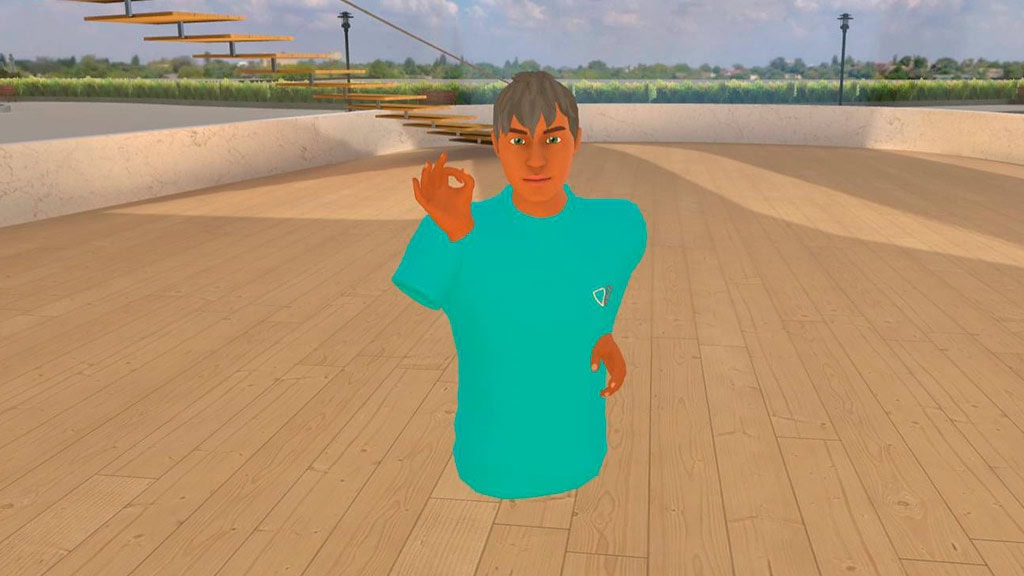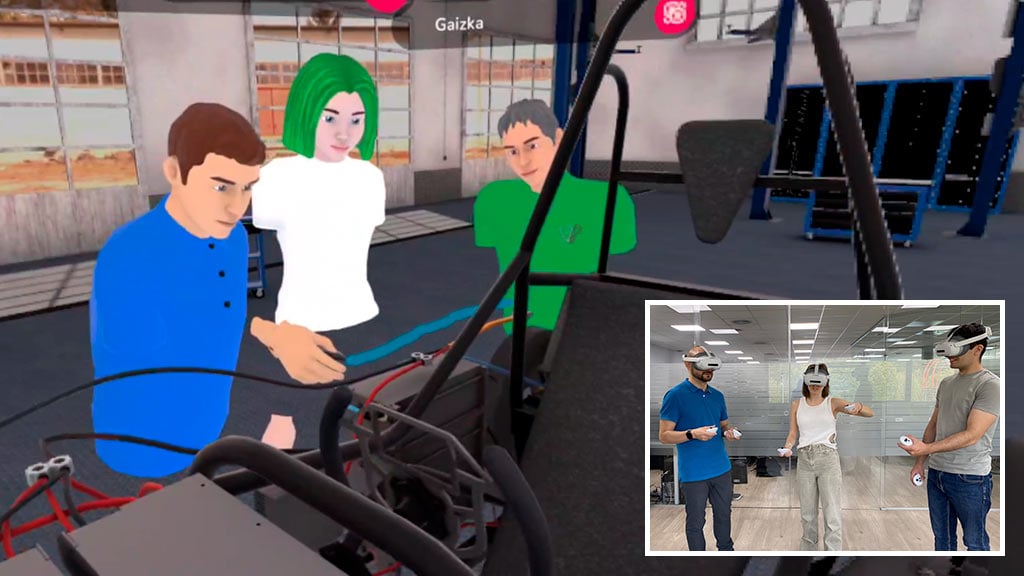In the development of virtual environments for training, avatars are often perceived as an aesthetic or recreational resource, a concession to gamification to capture students’ attention. However, this superficial view underestimates the fundamental role that avatars can play in serious and transformative educational contexts.
In collaborative Virtual Reality platforms, avatars are much more than a digital face or body: they are the bridge between the person and the environment, the channel of communication with others, and a key element in generating a sense of belonging, presence, identity and collaboration. They are, in short, an essential part of more inclusive, immersive and effective technical training.
What is an avatar?
An avatar is the digital representation of the user within a virtual environment. It can take many forms: from simple icons or images to complex three-dimensional models with body movement, facial expressions and lip synchronisation.
Some avatars seek realism, faithfully reproducing the user’s appearance; others move into the realm of abstraction, representing symbolic or stylised aspects of their identity. Their form, therefore, may vary, but their function is always the same: to allow the user to be present and act in the virtual environment as if they were physically there.
Historically, they have been used in video games and online platforms to allow users to interact and communicate. In the 1990s, with the rise of the Internet, they became popular in virtual communities and online games. As technology evolved, so did the complexity and level of customisation of these avatars.
Today, with the expansion of Virtual Reality, avatars are taking on a central role not only in entertainment, but also in areas such as education and business collaboration.
Personalised avatars: keys to a complete learning experience
One of the biggest advances in VR educational platforms is the ability to customise avatars. It’s not just about ‘making yourself look good’, but about building an extension of yourself to interact with in a shared world. This has profound pedagogical and social implications.
Reinforcing the sense of presence
Virtual Reality seeks to generate what is known as “presence”: the subjective feeling of really being in an environment, beyond the physical. This phenomenon is significantly enhanced when the avatar with which the user represents themselves in that environment has personalised features that are consistent with their identity.
A generic or imposed avatar can cause a disconnect, a dissonance between the real self and the virtual self, which interferes with the naturalness of interactions and reduces emotional commitment and engagement with the activity. In contrast, an avatar that the user perceives as their own—because it reflects their preferences, style, or even culture—acts as a catalyst for that immersion, facilitating more meaningful learning.
Personal expression and authenticity
The ability to configure elements such as skin colour, clothing, hairstyle or accessories not only allows for greater identification with the avatar, but also facilitates the expression of one’s own identity.
In this way, personalised avatars allow users to show the world how they feel and want to be perceived, within a safe environment. This authenticity promotes trust, active participation and emotional comfort, which are essential factors for effective collaborative learning.
Inclusion and diversity in the virtual classroom
Interaction between personalised avatars removes many of the barriers that exist in face-to-face communication: accent, physical appearance and facial expressions are no longer factors for judgement and become elements of recognition. This apparent neutrality allows more equal bonds to be built between participants.
For this to work, it is important to ensure that personalisation systems do not perpetuate stereotypes or exclusion. Platforms must offer broad and respectful options that are not limited to normative patterns of gender, ethnicity or appearance.
Improving communication and collaboration in multi-user environments
In virtual environments that include collaborative learning dynamics, several students must work together. In this context, personalised avatars make it easier to identify participants, distribute roles and improve group dynamics.
In addition, some systems allow avatars to simulate basic body language or gestures, which is key to non-verbal communication in situations such as team maintenance practice, logistics operations or virtual healthcare. Being able to look at a colleague, touch them, point to a tool or have a conversation greatly enriches the learning experience.

Preparation for network training
Virtual Reality platforms increasingly enable distance learning: students from different centres, regions or countries can share the same learning environment without being physically together. In these cases, the avatar becomes the main channel of interaction and reinforces the sense of community.
Personalisation helps the group get to know each other, identify with each other and organise themselves, even in virtual environments. This prepares students for a working reality in which remote collaboration and digital communication are increasingly common.
Avatars, an essential teaching tool
In short, avatars in Virtual Reality are not just a visual accessory or a decorative gamification tool. They are an extension of the user in the immersive environment, an emotional and social interface, and a highly valuable educational tool. Their design, customisation and proper use can make the difference between a superficial educational experience and a real transformation in the way we learn, collaborate and interact.
As virtual environments continue to gain ground in education, it will be crucial to understand the role that avatars can play. It is not enough for users to ‘enter’ a Virtual Reality environment: they must also be able to feel themselves within it.


